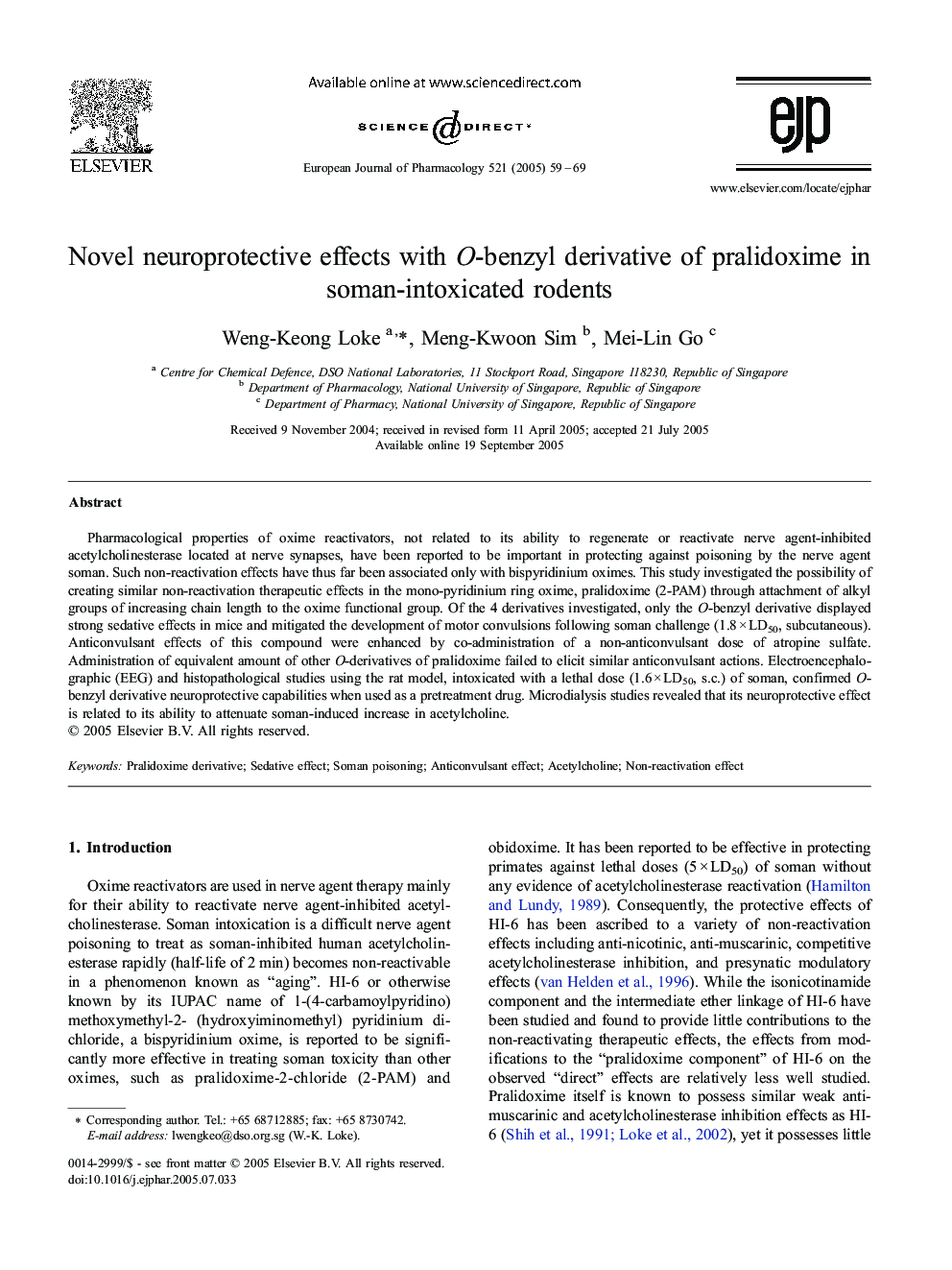| Article ID | Journal | Published Year | Pages | File Type |
|---|---|---|---|---|
| 9921089 | European Journal of Pharmacology | 2005 | 11 Pages |
Abstract
Pharmacological properties of oxime reactivators, not related to its ability to regenerate or reactivate nerve agent-inhibited acetylcholinesterase located at nerve synapses, have been reported to be important in protecting against poisoning by the nerve agent soman. Such non-reactivation effects have thus far been associated only with bispyridinium oximes. This study investigated the possibility of creating similar non-reactivation therapeutic effects in the mono-pyridinium ring oxime, pralidoxime (2-PAM) through attachment of alkyl groups of increasing chain length to the oxime functional group. Of the 4 derivatives investigated, only the O-benzyl derivative displayed strong sedative effects in mice and mitigated the development of motor convulsions following soman challenge (1.8Â ÃÂ LD50, subcutaneous). Anticonvulsant effects of this compound were enhanced by co-administration of a non-anticonvulsant dose of atropine sulfate. Administration of equivalent amount of other O-derivatives of pralidoxime failed to elicit similar anticonvulsant actions. Electroencephalographic (EEG) and histopathological studies using the rat model, intoxicated with a lethal dose (1.6Â ÃÂ LD50, s.c.) of soman, confirmed O-benzyl derivative neuroprotective capabilities when used as a pretreatment drug. Microdialysis studies revealed that its neuroprotective effect is related to its ability to attenuate soman-induced increase in acetylcholine.
Related Topics
Life Sciences
Neuroscience
Cellular and Molecular Neuroscience
Authors
Weng-Keong Loke, Meng-Kwoon Sim, Mei-Lin Go,
